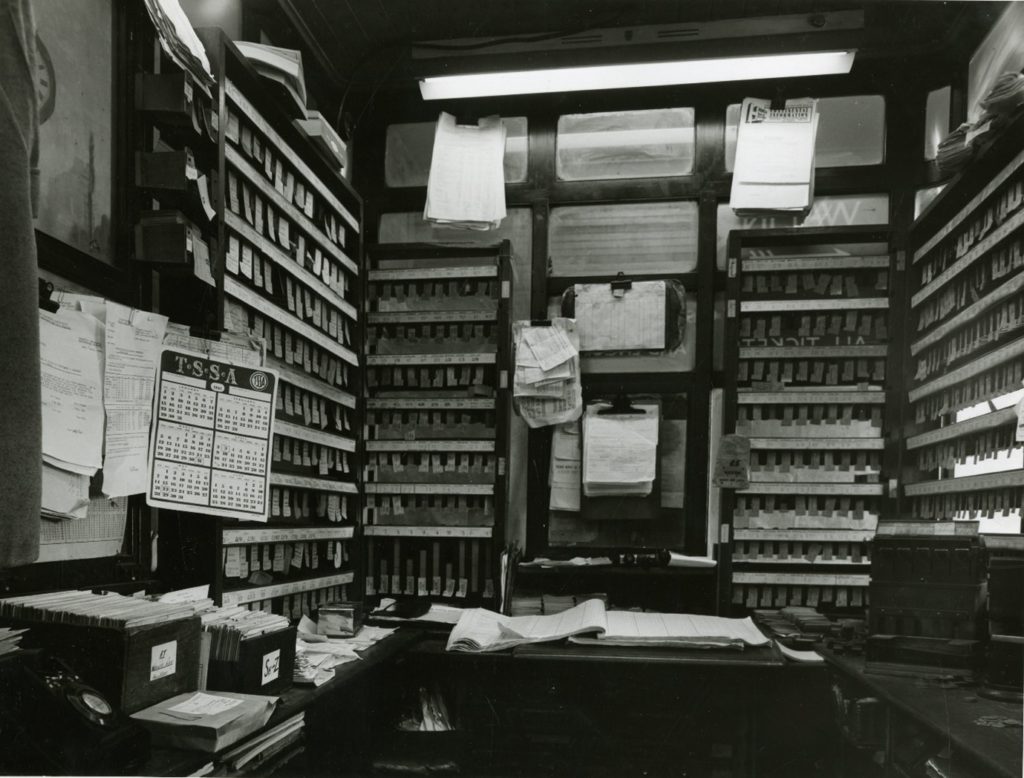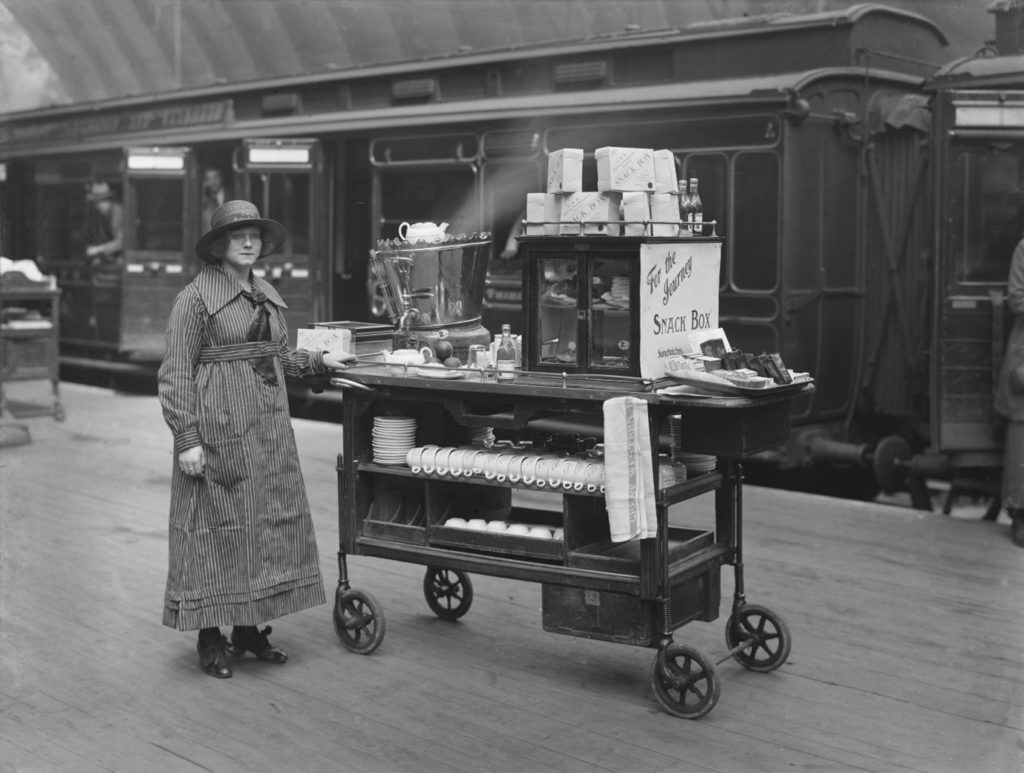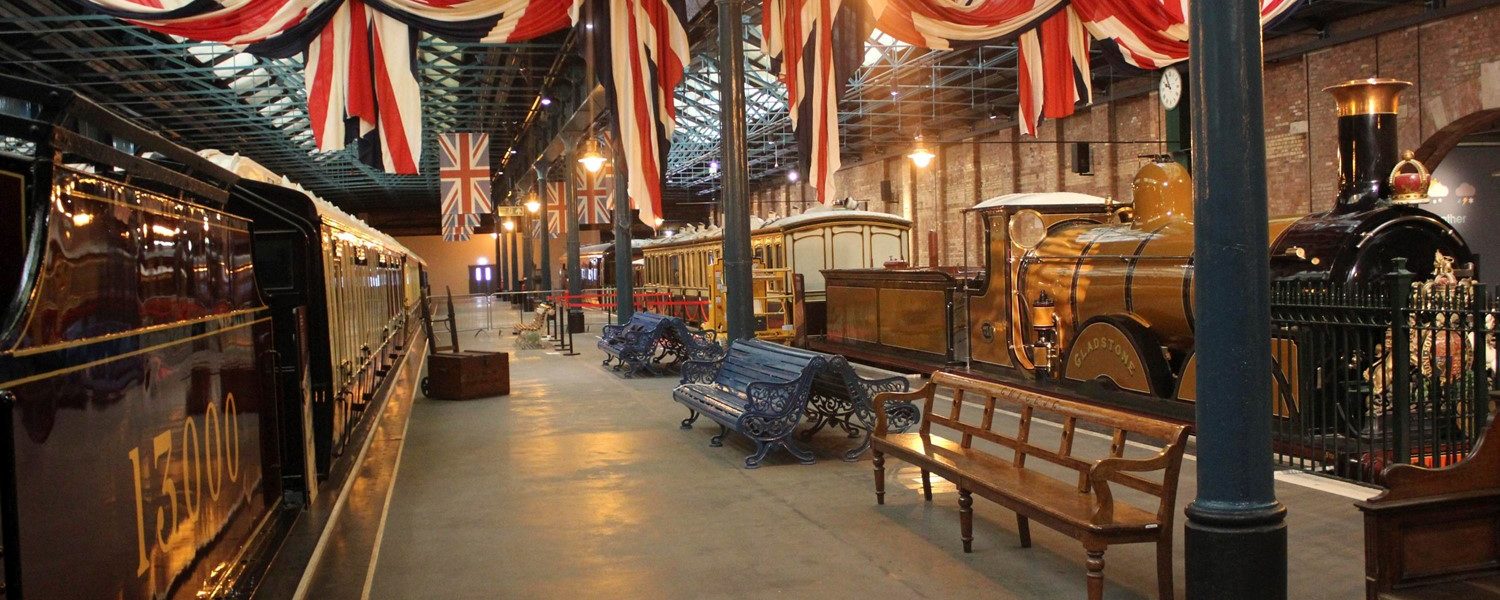The National Railway Museum recently announced the redevelopment of the permanent exhibition in Station Hall—one of the largest and most popular gallery spaces at the museum—with generous support from the Friends of the National Railway Museum. As the exhibition begins to develop, this post will explore some of the themes, stories and objects forming our research and give an idea of what the renewed exhibition in Station Hall may include.
The new exhibition will feature a refreshed rail vehicle layout, alongside films and oral histories from the Science Museum Group collection, some of which have never been on display at the museum before. New stories and diverse voices will fill the space, improving the unique experience that is a visit to Station Hall.

Displaying our rail vehicles
The locomotives, carriages and wagons in Station Hall are our star objects and treasured by visitors to the museum—perhaps none more so than the royal carriages. These palaces on wheels will remain a key feature of the renewed exhibition, offering opportunities to illustrate exciting new stories. One example is the role of Queen Elizabeth’s Saloon as a ‘rolling office’, complete with writing desk and telephone. The royal saloons weren’t just for relaxing in after all, but for working too.
Within the refreshed layout are current favourites including Queen Victoria’s Saloon and the MR Spinner, and exciting new additions including the LNWR Motor Coach.

Illustrating with our objects
The defining characteristic of Station Hall is its authenticity. The genuine railway building gives a real sense of stepping back in time, immersing you in the unique atmosphere of a railway station. The new exhibition will build on this with objects that would be right at home on any station platform. The passimeter (a once familiar sight, where travellers would buy their tickets from a booking clerk) will play a key role in one story, illustrating a stark contrast to the digital touchscreen ticket machines we use today. Meanwhile, the restored WHSmith bookstall will become a must-see moment in Station Hall that is sure to spark conversations of “I remember when…” and “Well, I didn’t know that…”.
The exhibition will incorporate smaller objects, posters, advertising signs and more. These objects will contribute to the immersive experience of an authentic station environment.

Using our film collection
The Station Hall redevelopment provides an opportunity to shine a light on some of the fantastic railway films from the Science Museum Group collection alongside other rarely seen footage.
Using films introduces authentic sights and sounds to the space, making it feel more alive than ever before. The films we show in Station Hall will focus on relatable moments through history. Just watching a few seconds of someone missing a train 70 years ago—their disappointed face and frustrated voice—it’s something we can all identify with, can’t we?
Some examples of films that have formed part of the research for the redevelopment to this point include the British Transport Film (BTF) short Rush Hour and the London, Midland & Scottish Railway (LMS) film Holiday. You can probably imagine what sorts of stories these films will illustrate from their titles alone, but there are others which are less obvious. The TV advertisement Completely Different, for example, is a strange but effective insight into the world of day return tickets and making leisure accessible for everyone, created by the Network SouthEast (NSE) branch of British Rail.

Bringing in voices with oral histories
It is not just films that will bring the space to life; also included will be some fantastic oral histories. The National Archive of Railway Oral History is a wonderful resource. It contains real stories, told by people who worked on the railway, in their own words. These varied voices are relatable, insightful, inspiring, sometimes shocking, and always worthwhile hearing. Where else would you get stories about Station Attendants giving the Queen Mother a maths lesson on a station platform, or Goods Shed workers dancing on top of a piano in their downtime?

What’s next?
Planning for the new exhibition for Station Hall is well underway, with research and story development ongoing and plans to bring designers on board in the next few months. We will continue to share updates as the project progresses.
The Station Hall redevelopment is part of a wider programme of development taking place at the National Railway Museum as part of Vision 2025: The World’s Railway Museum.

Good news. I hope the terrible, depressing lighting is going to be replaced
Does it make you ill too by any chance?
Hope they get rid of the awful cooking smell that pervades the whole Station Hall and has done for years
I know the one. Like re-fried sick.
I’ve been a regular visitor for several decades. I appreciate the dilemmas you face about choosing vehicles from a large collection. I’m glad the MR Spinner is still to feature and I only hope that it will be possible to see it’s beautiful lines fully, at least from one side. Currently many young people will not believe it has wheels!
Royal carriages are interesting but they do not reflect 99.99% of rail travel history. A good collection of ordinary carriages through the decades remains important.
Glad you generally reflect the rail history of the whole of Britain and not just the North East, though that has its place of course.
The redevelopment of the Station Hall sounds like a more interactive experience for those who have a smart phone. But what about those who do not use these all pervasive devices – especially the youngest visitors often on school visits. They hardly seem conducive for use on group visits, being essentially a personal device. Apart from this, the concept of using the resources that the Museum has at its disposal sounds excellent to me, especially the stories of people associated with the railway in the past. It certainly seems far better than the touch screen so called ‘interpretation’ provided in far too many places today which fall far short of creating the atmosphere that you are seeking. None of this of course can replace the knowledgeable people who the Museum employs.
My best wishes for the success of the revised Station Hall.
Hmmm, reminds me of a recent trip to Rievaulx Abbey: lots of people all gently bumping and shoving each other to beep a silly QR code at certain points, and fiddle with their phone as brain-dead slaves to an English Heritage cost cutting gimmick, rather than savouring what was around them by more relaxed, non-battery-dependent means of old.
A very interesting report on current activities.
What won’t we see any more?
One of the problems with station hall is its lack of flexibility. Last time it was refurbished most of the lines into it were blocked as rooms were constructed at the track access end, meaning it was a major task to move the vehicles about, where before it was possible to change vehicles round at each platform over night if wanted. Such changes on a regular basis are a valuable way of easily refreshing the exhibitions an attracting repeat visits. Restoration of such ease of access, along with improved lighting, would benefit the hall and museum greatly.
We are visiting the museum in August 2023, how much of the museum will we be able to see?
Looking forward to it as its a long trip for us
I wish you well with your project. We visited the museum dec 2015 and our family including 4 year old grandson enjoyed looking around the trains. Since that time we have been to Japan and journeyed on the bullet train, remembering the story of how there is a carriage in the York museum.
I find the Flying Scotsmen a very interesting and impressive train. I’ve only been on it two or three times when I served with the WRAF from 1968 to 1972. I travelled from London on the train going to Edinburgh Station. I loved it and the journey was much shorter than other trains at that time. I got off the train at Kirkcaldy Station in Fife. Then I got a bus to the small village of Coaltown of Wemyss where I was born and grew up. I SO wish I had taken photos of this awesome train from the outside and the inside. I became interested in photography after this. This train was an “adventure” which I shall NEVER forget and is a wonderful vivid memory. I was 19 back then and I’m now 74!
The WH SMITH shown on this page is the one that used to be in Hull’s Paragon Station. …
About 10 years ago you had an exhibition of several train films with no commentary I think. They were amazing & I would love to see them again. People just sat silently and watched mile long trains trundle past in the majestic US landscape. Other countries too if I remember correctly. The were quite hypnotic and relaxing.
In the past too much emphasis in Station Hall on Royal Coaches which is an insignificant and narrow part of railway history. More mundane rail vehicles which moved passengers and freight around ought to appear more substantially and changed on a regular basis.
Station Hall is authentic and should largely remain what it is a genuine Victorian railway building.